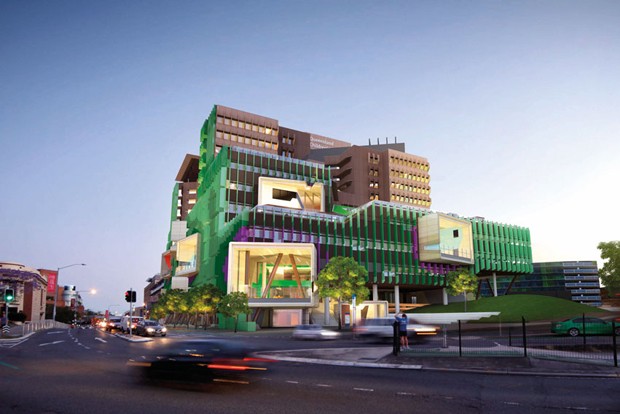Yvonne Rantzen, senior associate at Conrad Gargett Riddel Ancher Mortlock Woolley (CGRAMW), was recently appointed the Design Institute of Australia’s Queensland Chapter co-president.
She has more than 20 years experience in several design sectors, including workplace, commercial, high-end residential, multi-residential, health, education and defence.
Architecture & Design spoke to Rantzen about what she hopes to achieve at the DIA, what good ethics in design is and which young designers in Australia are doing great things.
You’ve recently been appointed DIA QLD Chapter Co-President. What do you hope to achieve in the role?
Our vision at the DIA Queensland Chapter is to raise awareness and increase the profile of the design profession within the community. We want to establish Queensland as an epicentre of design innovation and creativity where the contribution of leading Queensland designers is recognised.
I will oversee education programs in Queensland including TARMAC and Dialogues – TARMAC is a Queensland program specifically tailored to assist emerging designers in launching their careers and forge important networks and relationships with Queensland and international design leaders.
I am particularly interested in accreditation for all areas of design, which I hope to advocate for in this role. I am an accredited designer and hope to raise awareness of the importance of accreditation for the benefit of our profession.
You’ve worked on projects from 1,000 sqm to 100,000 sqm. What has been your favourite project to date?
A project that I am particularly fond of at the moment is one that I am working on with Micah projects. Micah Projects is a community organisation with an unswerving commitment to social justice. They are a group who work with the disadvantaged in our society. They believe that every child and adult has the right to a home, an income, health care, education, safety, dignity and connection with their community of choice.
I can’t say enough about how great the work is that they do. It has inspired our team to create something really special for them with a very modest budget. It proves that great design doesn’t have to cost the earth.
By far though, the most exciting and challenging project we have worked on in the last few years is the Lady Cilento Children’s Hospital (pictured below). It has already won an International Future Health Project award from the International Academy for Design and Health, International Academy Awards 2013. Our team are incredibly proud of the facility and the benefits that it will bring to the Queensland Community.

You believe in maintaining and promoting ethics in design. What does good ethics in design mean to you?
The DIA has an excellent code of ethics and membership means adherence to this code. I decided to become a designer to create better spaces for people, to create experiences that enhance rather than hinder. At every point in the design process there are questions of ethics that we can ask ourselves, and they need to be thoroughly interrogated. These questions are often centred around problems such as environmental and social sustainability as well as what is going to best support and are appropriate for the activities that may take place within a space.
Do you think designers today are adhering to good ethical practices?
Many practices do and many don’t. The issues are broad and varied. I think the best way forward is to continue to debate these issues and invite discussion with industry, government and the private sector. The DIA Qld Dialogues series of discussions regularly investigate many of these themes and I would encourage all young designers to attend them and become part of the discussion.
You’ve previously spent six years teaching at UTS. What was the most rewarding part of teaching?
Teaching is incredibly rewarding. The enthusiasm and passion of students never fails to reignite my own enthusiasm. It’s great to see students with intellectual curiosity successfully solve complex design problems.
Did any students have a particularly profound affect on you?
I have had the privilege of working with some of Queensland’s most talented students. Of particular note are Nicholas Gonsalves and Nicholas Martoo, now architecture graduates working at CGRAMW.
Together, Nic and Nic won first prize at the International Young Architects Meeting and Design Competition in Antalya, Turkey last year. They were also finalists in a Design Ideas Competition for a new official residence for the Prime Minister of Australia on the shores of Lake Burley Griffin, run by the University of Canberra and the Gallery of Australian Design.
Their dedication and love of design is infectious and working with them is a pleasure. I recommend watching what they do in the future.
A couple of UTS students that I taught have also gone on to achieve some pretty amazing things in design. Of particular note are Blair Cooper, who is working in the retail sector, and Isabel Koenig Woodruff, who went on to work on award winning hospitality designs at Luccetti Krelle. Both designers have contributed significantly to interior design in Australia.
If you could change one thing about the industry, what would it be?
After 20 odd years in this business, I still genuinely love what I do. The only thing that I would change is project programs that are way too short.

